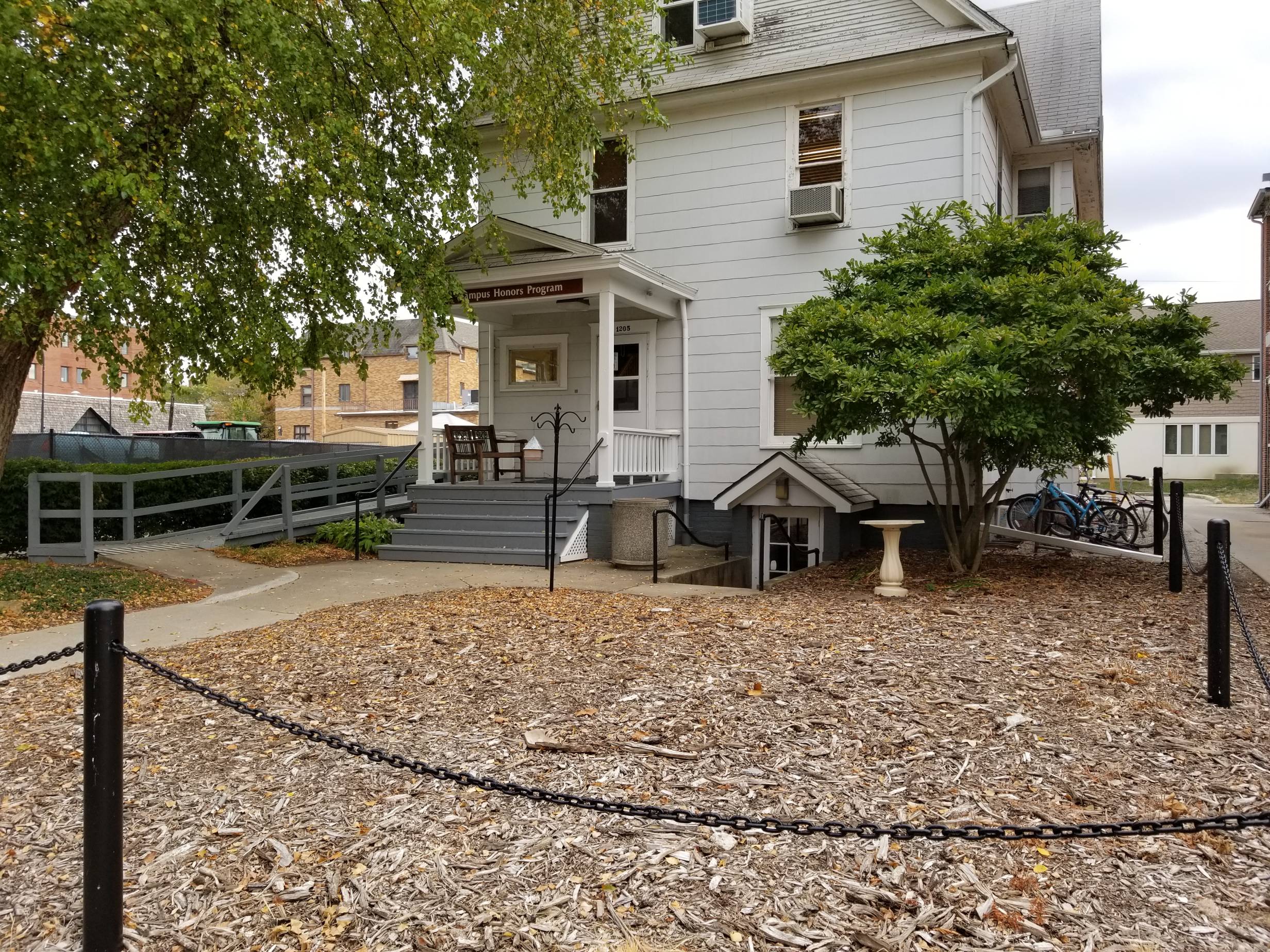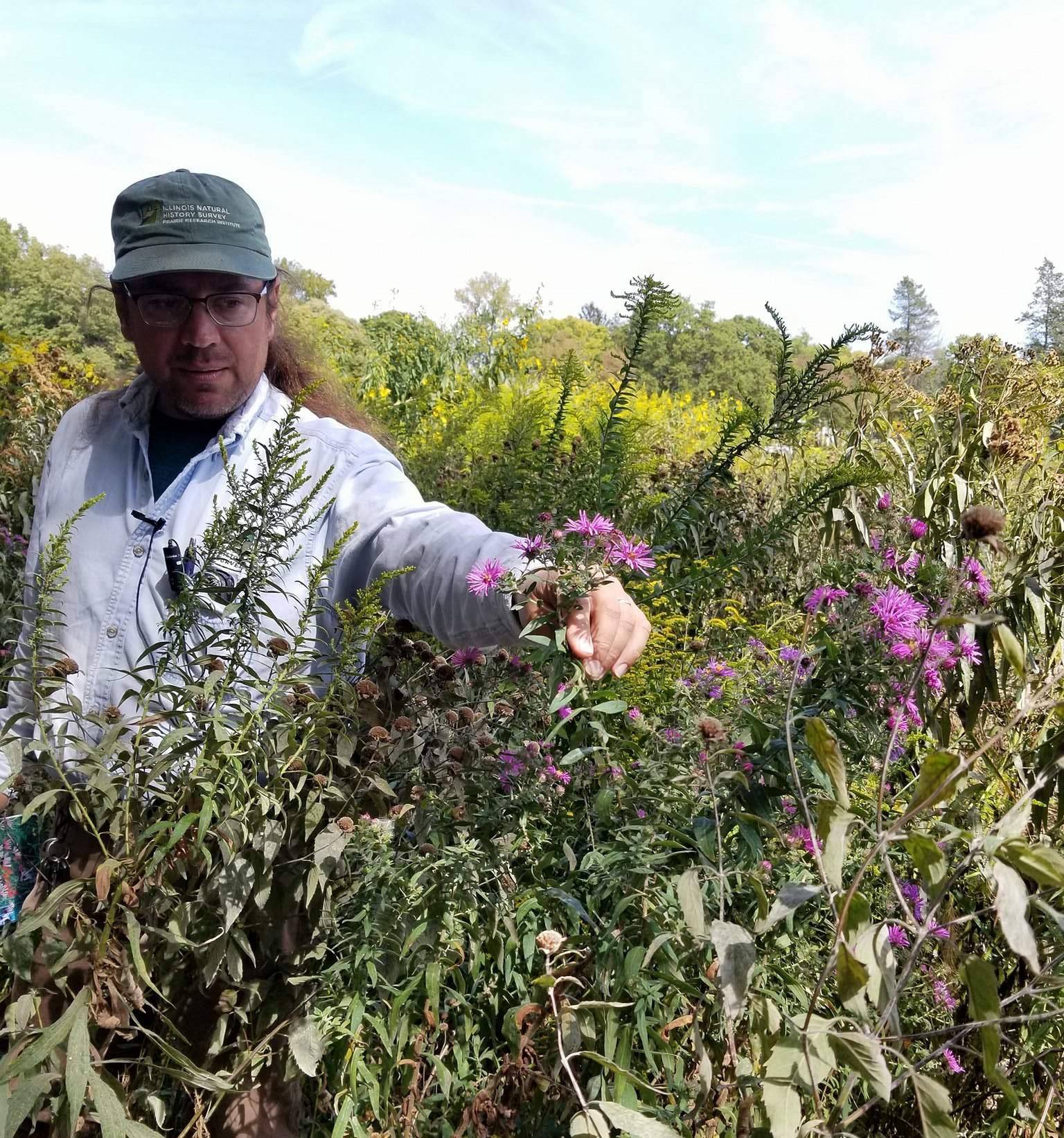On a clear-skied Tuesday, a yellow butterfly flickered amongst purple and golden flowers. A soft breeze rolled past an array of plants and grasses, eliciting the sounds of crickets, grasshoppers, and gold finches in its wake. It was a typical day for the ecology of the Florida and Orchid Prairie, filled with the sounds of native Illinois. But for the Campus Honors House Prairie, another well-known campus conservation effort, this picture fell to a silence. The once small but deeply growing prairie that sent the sounds of insects and finches flowing down W. Oregon Street in Urbana was replaced with the quiet of freshly hoed soil and sprinkled woodchips—leaving many of us to wonder, “what happened?” As it turns out, the pursuit of an answer gave way to a much deeper issue— a balance of growth, and perspective.
The Campus Honors House Prairie once provided educational programs and insight on the history of how Illinois once looked. Thus, it is natural to wonder, why was it removed so suddenly? From the perspective of Dr. Kim Graber, director of the Campus Honors Program (CHP), the change was realistically not so “sudden.” “The individual who liked it, tended to like it for its educational value and as an aspect of environmental sustainability. However, they were unwilling to help us maintain it. Those who did not like it were very passionate about removing it, despite many tries at keeping it alive.” For Dr. Graber, along with many other staff and students at the CHP, the issue of providing funds, time, and effort to their students and staff began to outweigh the heavy cost and physical work that went along with maintaining the prairie. Those who were once passionate about the conservation effort either graduated or dispersed, and the responsibility fell on the professional staff. According to the Illinois Master Naturalist Curriculum Guide by James Ellis, “Prairie remnants and reconstructions need periodic management so that the plants and animals that depend on these habitats can thrive.” For the CHP, this became the most difficult aspect to provide. Weeds and invasive species overtook the prairie, and to some, it began to lose its appeal. Yet, to many staff and students, it was still an important, beautiful aspect of the house. With that said, the impact of its departure rippled through campus.

We look to the Florida and Orchard Prairie— a 3-acre plot spanning a south campus field at The University of Illinois considered a “no-mow area,” for an example of what could have been. This beautiful plot of prairie is carefully watched and maintained. Along with most other prairies including the Campus Honors House Prairie, is a hub of biodiversity. According to James Ellis—a botanist and manager of The University of Illinois Natural Areas—it holds around 50 different species, with a breakdown of roughly 25 native species and 25 non-native species. Other larger prairies can range from up to 120-150 different species, holding “3-times the amount of diversity” than that of the F-O Prairie. “When a wetland or a prairie is in the right spot to alleviate flooding, that benefits humans,” stated Ellis. “The soil absorbs CO2 in the air, and since prairies contain more biomass beneath them than above, the plants soak up excess water.” A simple visit to the F-O Prairie provides value and insight in why they are important to grow, preserve, and care about. The issue then becomes one of bridging the gap between perspectives of where a prairie should be, and the significance of removing an existing one.
“How could a weed be a book?” Aldo Leopold in A Sand County Almanac once addressed this view so many hold today—that native flora, such as the CHP Prairie, is hardly something more than a pile of weeds. For some such as Jamie Ellis, Leopold’s idea of each prairie plant as a book of growth, perspective, and truth holds as strong as ever. The importance lies in bridging the gap between those who cannot see the beauty within conservation of native floral and those who know all too well of its importance and significance, without demonizing the other side in the process. Many factors contributed to the dismantling of the CHP Prairie, some of which were out of the hands of those involved. But replacing this lost prairie with a new one elsewhere on campus, and leaving a memorandum such as a plaque explaining the significance of a prairie that once thrived in the CHP plot will go a long way in the right direction. “Notice the details. The world is not just a green background…” stated Ellis. “You pick out individual species and plants and that’s the wonder of biodiversity.” Like prairies, we are all different individuals with impacts and experiences. We hold diverse opinions that we must maintain and balance carefully with those of others. If we can bring those perspectives together and use them to recognize the importance or prairies and their management, together we can create a climate that is recognizing and valuing of prairieland, not just on campus, but within the world as well.








